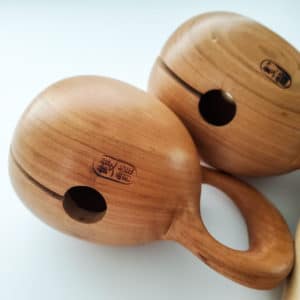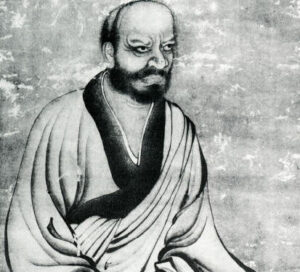Mindfulness during mealtime is the goal of Oryoki, a philosophy of Zen Buddhism that is more important today than ever before. In a world of fast food, Oryoki asks you to slow down. An Oryoki bowl set consists of three nested bowls, cloths, and accompanying utensils that are all at once, minimalist, functional, and symbolic.… Read more »
Still Sitting Meditation Blog
Manjushri the Bodhisattva of Wisdom
With a flaming sword held aloft and the visage of a fresh-faced boy, Manjushri the Bodhisattva of Wisdom strikes an imposing figure. Manjushri is a preeminent figure in Buddhist traditions from India to Japan. The various symbols with which he is depicted, including his sword and seemingly perpetual youth, are all bound to his renown… Read more »
How to care for a zafu
Your zafu is not just a cushion. It is a symbol of your commitment. So, when we make a zafu, we take it seriously. We craft these cushions carefully, using durable materials that are meant to last. You should have confidence knowing that when you purchase a cushion from Still Sitting, you’re getting a premium… Read more »
Life Practice with the Southern Palm Zen Group
Still Sitting is proud of the relationships it forms with organizations and individuals around the world as they engage in meditation and mindfulness practice. Occasionally, we like to share their stories in our Spotlight Series. Geido Ann Grossman’s spiritual journey has had a tendency towards the pragmatic. Although today she serves as the Assistant Teacher,… Read more »
What is a mudra?
Every detail of your meditation posture is intentional: from your knees, ankles and spine, to your chin, shoulders, and hands. When sitting correctly, your body should fall into a natural alignment, but what do you do with your hands? They shouldn’t just sit there, fidgeting. Instead, most meditation traditions suggest you adopt a hand gesture,… Read more »
What is a gomden?
The gomden or “Tibetan seat” is a firm, rectangular cushion that offers a meditation alternative to the more widely-used zafu. Everyone’s body is unique, so it’s important to find a style of cushion that works for you. This can make the difference between deep practice and meditation marred by distraction and discomfort. If you are… Read more »
Beginner meditation poses
What comes to mind when you think of meditation? Perhaps someone with their legs twisted up like a pretzel? Don’t worry, meditation does not have to be, nor is it intended to be uncomfortable: it is about you and your body. The good news is that there are different positions you can use to suit… Read more »
Kapok fiber: a sustainable cotton alternative
Derived from the pods of the ceiba pentandra tree, kapok is a fluffy, cotton-like natural fiber that has historically been used in upholstery, furniture, and meditation cushions. Its soft, buoyant composition (weighing one-eighth the weight of cotton) makes it both comfortable and supportive to sit on. In addition to these qualities, kapok has also become… Read more »
Moktak and Chukpi: Korean instruments for meditation
The moktak and chukpi are traditional Korean percussive instruments used during meditation. We are pleased to make them available here at Still Sitting. The moktak is a drum similar in shape and timbre to the Japanese mokugyo, sometimes called a “fish drum.” The chukpi or “bamboo clacker,” is slapped against the hand, emitting a loud… Read more »
Rinzai Gigen and Shogun Zen
According to the Zen tradition, awakening can arise from the most shocking and unexpected places: a terrifying shout or a blow to the shoulder. While hard to imagine today, it was sometimes these unconventional methods that Linji Yixuan, known as Rinzai Gigen in Japan, utilized in his teachings. Rinzai Gigen, an iconoclastic Chinese Zen monk,… Read more »











Recent Comments